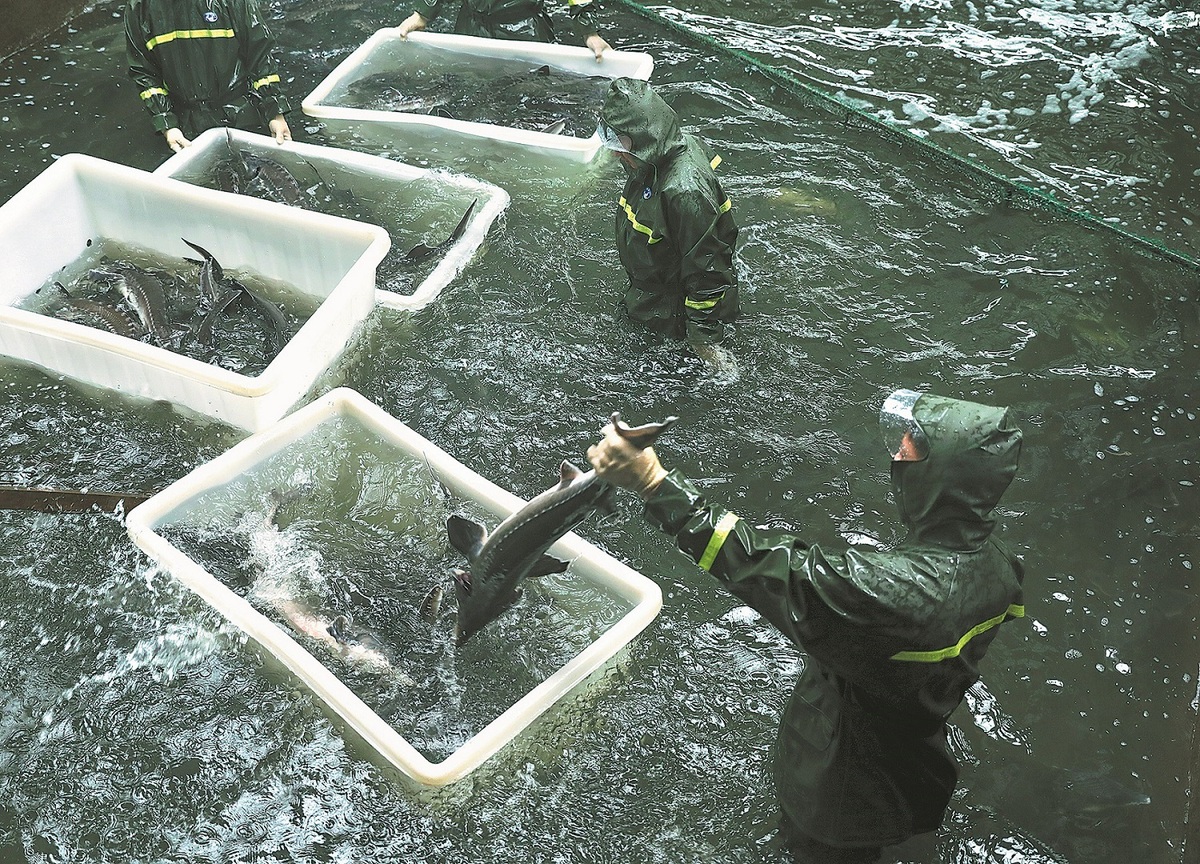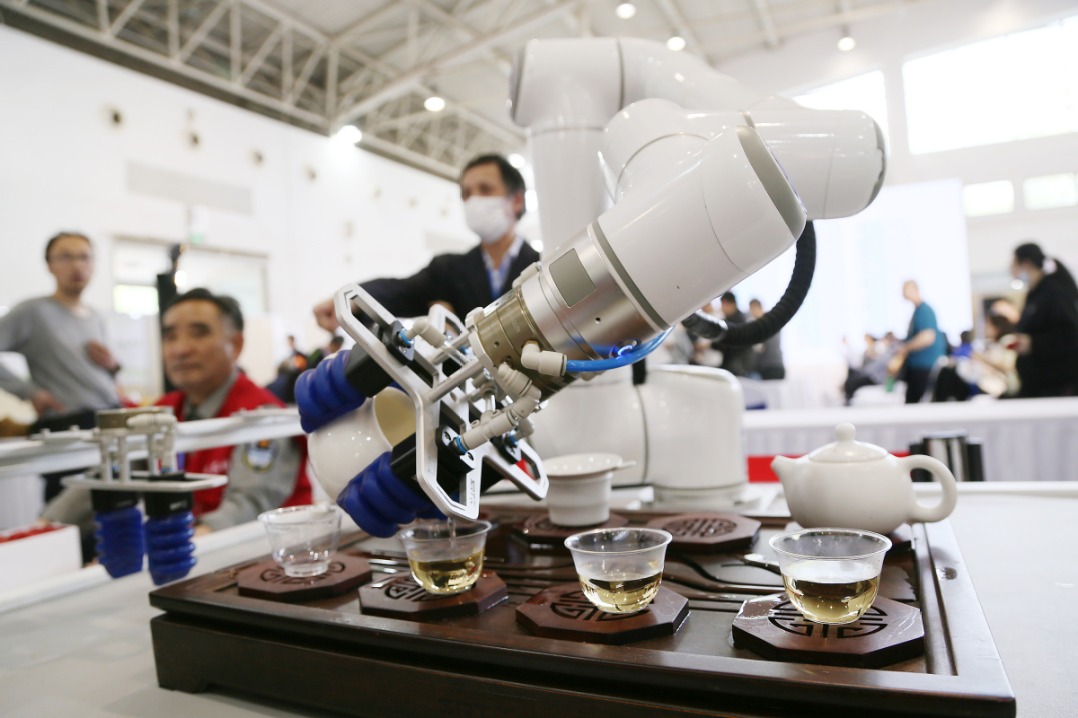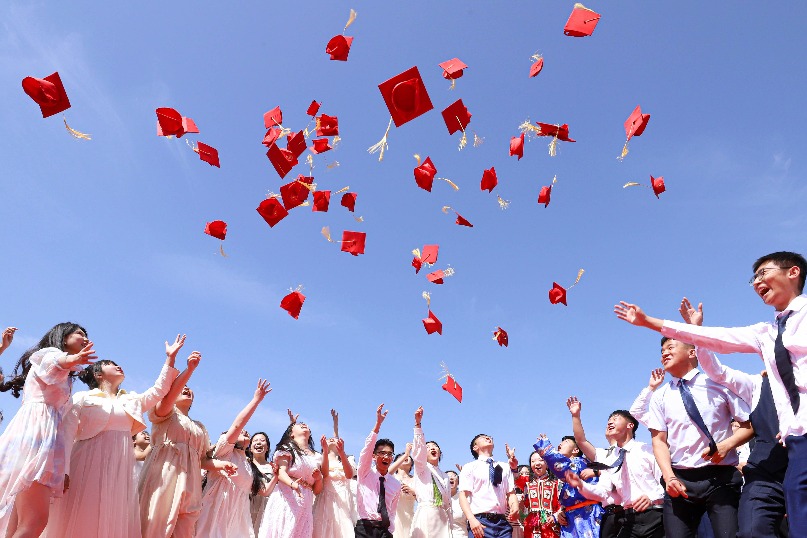Fish farming on dry land nets multiple catches


To support his family of five, Deng Zhongzheng used to spend day and night on the Qingjiang River tending to his floating fish farm. Braving wind and rain, he could hardly spare a single day away from his 30 cages of sturgeons.
If business was good, he could make more than 100,000 yuan ($13,800) a year, but if it was bad, floods could rob him of his entire school of fish.
However, Deng's life living at the mercy of the weather changed in 2016 after the government in Yidu, Hubei province, ordered all floating fish farms to operate onshore.
The results of the government's decision have been twofold — fish farmers' incomes have been secured, and the Qingjiang River, no longer a pawn of industry, has gotten a lot cleaner.
As the Qingjiang is a major tributary to the Yangtze, Asia's longest watercourse has stood to benefit, too.
Eights years prior, the development of fish farming in the Qingjiang had been disorderly, with fish cages covering most of the water surface, leaving only a narrow channel, said Deng.
Farmers kept increasing the use of fodder in an attempt to boost their incomes, which resulted in heavy pollution. "Some parts of the river were black, and others became reddish with a lot of rubbish and dead fish," he said.
According to the Yidu government, people started to farm sturgeon in the area in the 1990s, and 555 households were engaged in the business as of 2016. At that time, sturgeon cages in Yidu occupied a total water surface area of almost 8.65 square kilometers, and it contributed to 30 percent of the country's total sturgeon production.
The farming activity led to severe eutrophication in the Qingjiang, with the quality of the water in some areas falling below Grade V, the lowest rating in the country's five-tier quality system for surface water.
Following the leadership's instructions in 2016 calling for concerted efforts to protect the Yangtze and stop overdevelopment, the local authority decided to remove all fish cages in the Qingjiang and another watercourse named Yuyang, said Wang Desheng, head of Yidu's aquaculture service center.
The government raised almost 300 million yuan to support the work, and the operation was completed in 2017, he noted.
The removal of the cages didn't mark the end of the industry in Yidu, but the beginning of an endeavor to upgrade it to make it green, with three sturgeon aquaculture bases built onshore.
























